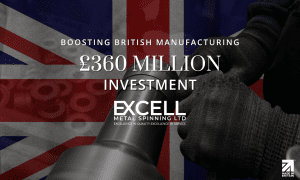Metal Spinning Lighting

Curtis Bligh
- 4 Min Read
Our metal spinning services are catering for the needs of the lighting industry on a daily basis. Even more so as reshoring efforts are underway. And it has become quite clear from our customers the importance of local supply.
Metal spinning as a craft often falls under the radar yet continues to defy the odds. As a metal forming technique, dating as far back as ancient Egypt, its importance to manufacturing continues on. Even more so now with modern technology and further advancements within the field.
We’re seeing increasing demand for metal spinning, particularly within the UK lighting industry. This is partly due to the many benefits metal spinning has to offer. From increased durability in quality crafted components, to improved versatility and better customization.
In today’s blog, we will explore more about the metal spinning technique that helps light up our homes and streets. We explore some of the materials used for lighting in addition to the innovative designs metal spinning has to offer. Let’s illuminate you with knowledge!
The Benefits of Metal Spinning Lighting
Metal spinning as a metal forming technique is often favoured by lighting designers for the creation of lighting components. Out of the many benefits on offer, one of the most favourable is improved durability. The multiple passes when forming over the mould naturally hardens the material making them stronger. This also means lighter material can be used keeping costs down for design teams.
Lighting components can also be produced more uniformly. This helps avoid issues of wrinkling or warbling the structure of the components during shaping. Components like lampshades can also be strengthened with beaded edges. This also adds to the aesthetic of the lampshade design and increases durability of the components.
With sustainability a much talked about topic in the business world, designers are now taking heed. Fortunately, metal spinning offers a much more sustainable option in comparison to casting or forging. One example is the full utilization of material, using the full circular disc to form components. Any waste material during trimming is collected and recycled into new sheet material which can then be reused.
Another benefit of metal spinning for lighting is the versatility and creativity it allows. Metal spinning can produce various shapes and sizes of lampshades, such as hemispheres, cones, cylinders, parabolas, ellipses, and more . Metal spinning can also use a wide range of metals, such as copper, brass, aluminium, and steel, which can have different finishes and colours to suit different styles and preferences. Metal spinning can create elegant and modern lighting designs that enhance any space.
Metal Spinning Lighting Examples
There are many designs within the lighting industry that have been produced with metal spinning. Excell Metal Spinning Ltd. is a leading UK manufacturer of lighting components including lampshades, fixtures and bezels. Some of our work can be seen within retail outlets and restaurants. Not to mention our streets!
Examples of lighting that can be produced using metal spinning include;
- Louvres and shades that control light distribution indoors and outdoors. These are metal spun components that have slits or holes to allow light to pass through in a controlled manner. They can create different effects, such as softening, diffusing, or directing the light.
- Fixtures that use metal spun components to hold other lighting parts, or form the main body of the fixture. These are metal spun components that act as supports, bases, or casings for other lighting elements, such as bulbs, wires, sockets, or lenses. They can also add to the aesthetic and functionality of the fixture.
- Bollards often use metal spun caps and louvres for glare control. These are metal spun components that cover the top and sides of bollard lights, which are short posts that illuminate pathways or landscapes. They can prevent glare and light pollution by directing the light downwards.
- Pendant lighting often use metal spun bowls or cones to create a modern and minimalist look. These are metal spun components that hang from the ceiling and form the main part of the pendant light. They can have different shapes, sizes, colours, and finishes to suit different styles and preferences.
The History of Metal Spinning Lighting
The history of metal spinning dates back to ancient civilization and has formed part of society ever since. The craft saw use for the creation of metal vessels and other objects used within societies of those times. Metal Spinners were even thought of as magicians. Some would argue they still are!
The skill itself has been passed down through generations, and in the 18th century saw its use in the lighting industry. The 18th century saw the popularity of metal lamps and lanterns rise throughout society. Metal spinning was ultimately used for the creation of components for these lights including reflectors, shades and bases. The heritage designs of which still dot the cityscapes throughout the UK.
Metal spinning improved further with the rapid acceleration of new technologies in the 19th and 20th Centuries. New lathe developments resulted in faster and more precise production of components. Initially using steam power, metal spinning lathes eventually went fully electronic to power them. This further unlocked the ability to metal spin more exotic materials and mass produce components.
The emergence of CNC machinery in the 20th Century also aided in the development of metal spinning. More complex shapes and designs could be produced in larger quantities more consistently and accurately. The reduction of human labour also drove costs and lead times down. Additional processes such as welding and polishing could be integrated alongside the use of CNC Metal Spinning. This resulted in the improvement of both the quality and the functionality of metal lighting components.
Metal Spinning, to this day continues to be an effective method of metal component production. It is favoured by lighting designer for its versatility, durability, sustainability and creativity. To gain a deeper insight into the history of metal spinning, read our blog here.
Conclusion
Metal spinning is a metal forming technique that has been used for centuries, but still has a lot to offer to the modern lighting industry. Metal spinning can create durable, uniform, sustainable, and versatile lighting components that can suit any design and preference. Metal spinning can also use different metals and finishes to create stunning lighting effects that can enhance any space. Whether it is for indoor or outdoor lighting, metal spinning can produce high-quality and cost-effective lighting solutions that can meet the needs and expectations of customers. Metal spinning is truly a craft that helps light up our world.
Related Articles

Boosting British Manufacturing: A £360 Million Investment
Boosting British Manufacturing: A £360 Million Investment Facebook Twitter LinkedIn WhatsApp Email It’s been declared ahead of the Budget that Chancellor Jeremy Hunt will announce

Design Considerations for Metal Spinning Success: Part One
There are many design considerations businesses should considers to get the most out of their metal spinning supply. Read Part One here

The Importance of Innovation in UK Manufacturing
Manufacturing plays a pivotal role within the UK, shaping society and innovating like no other. It is the most productive sector in the UK

